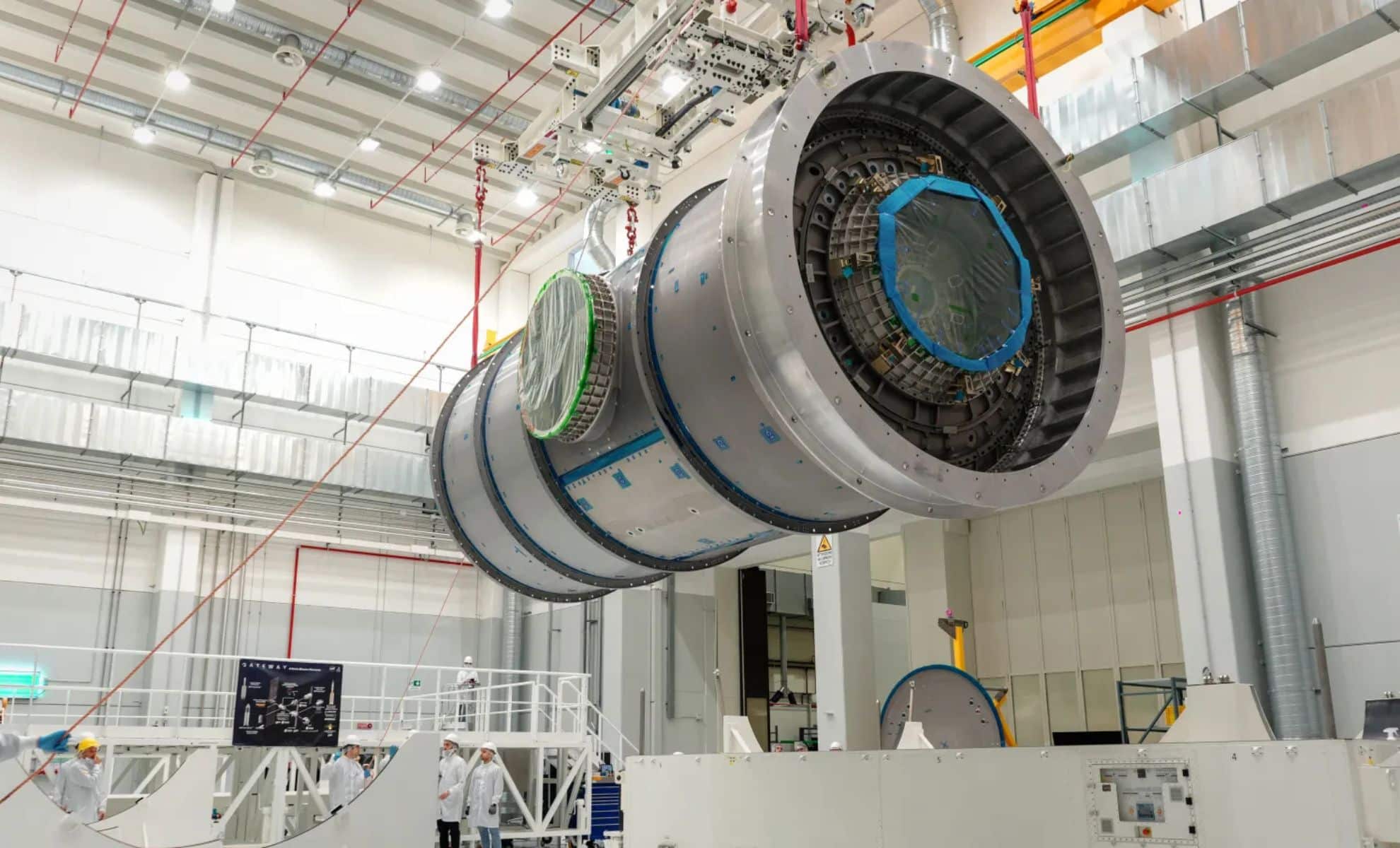
NASA’s groundbreaking Artemis program is making remarkable strides towards its vision of sustaining a human presence on the Moon. Central to this initiative is the Gateway, an innovative lunar space station designed to facilitate astronaut missions, advance scientific research, and support future expeditions to Mars. This pioneering station will orbit the Moon, acting as a vital hub for deep space exploration while enhancing our knowledge of human habitation and operations beyond Earth’s atmosphere.
The project recently achieved a significant milestone as NASA and its global partners, including the European Space Agency (ESA) and the Italian Space Agency, reported substantial advancement in the Gateway’s Habitation and Logistics Outpost (HALO) module. This essential structure, intended to accommodate astronauts during their missions aboard Gateway, is approaching completion at the Thales Alenia Space facility in Turin, Italy. Once ready, it will be shipped to Northrop Grumman’s location in Arizona for final outfitting and testing at NASA’s Kennedy Space Center in Florida.
With contributions from various nations and private enterprises—such as SpaceX, Blue Origin, and Maxar Space Systems—Gateway symbolizes a collaborative global effort to explore deeper into space.
The Technology Powering Gateway
NASA has targeted a launch date of December 2027 for the Habitation and Logistics Outpost (HALO) and the Power and Propulsion Element (PPE), two fundamental components that will form the foundation of the Gateway lunar space station. The PPE will provide solar electric propulsion, designating Gateway as the most advanced spacecraft of its type to date. Once launched aboard a SpaceX Falcon Heavy rocket, these modules will embark on an approximately year-long journey uncrewed to lunar orbit, gathering scientific data on deep-space radiation prior to activation.
As highlighted in a recent mission update, the initiative has reached pivotal stages in hardware development across multiple international sites. “The construction and testing of hardware for Gateway is an exemplary model of international cooperation,” remarked Jon Olansen, the Gateway Program Manager at NASA’s Johnson Space Center in Houston. “We are thrilled to mark this significant flight hardware milestone, and this is only the beginning—considerable and vital advancements are being made alongside our global partners.”
A notable contribution comes from the European Space Agency (ESA), which is testing its Lunar Link communication system in France. This state-of-the-art technology will facilitate high-speed data transfer between the Moon and Gateway, ensuring reliable communication for astronauts and mission control. Furthermore, ESA is also commencing the production of Lunar I-Hab, a second pressurized habitation module set to be delivered with Artemis IV, which will enhance Gateway’s capacity for prolonged lunar exploration.
As each milestone is achieved, Gateway inches closer to its launch, with NASA and its global allies establishing the groundwork for the first permanent space station in lunar orbit—an essential step towards continuous lunar exploration and eventual crewed missions to Mars.
In parallel, Maxar Space Systems has made significant advancements on the Power and Propulsion Element, completing the installation of Xenon and chemical propulsion fuel tanks and testing the largest roll-out solar arrays ever constructed. This system will undergo its final testing and assembly before being integrated with HALO.


Thales Alenia Space
The Impact of Gateway on Lunar Exploration
Upon achieving lunar orbit, Gateway will function as a scientific center, logistics hub, and transportation waypoint for upcoming Artemis missions. The Artemis IV crew will be the first to utilize Gateway, docking their Orion spacecraft with the Lunar I-Hab module to enhance the station’s livable area.
Subsequently, SpaceX’s Starship landing system will transport astronauts from Gateway to the Moon’s South Pole, where NASA intends to establish a permanent research facility. Additionally, NASA has joined forces with Blue Origin to develop Blue Moon, another human landing craft that will support Artemis V and future endeavors. This dual-lander approach ensures versatility and a consistent schedule of lunar landings, paving the way for eventual crewed missions to Mars.
Other international contributions feature Canada’s Canadarm3, a sophisticated robotic arm for external maintenance and cargo handling, in addition to Japan’s JAXA-designed life support systems, batteries, and resupply vehicles. The Mohammed Bin Rashid Space Centre (MBRSC) in the United Arab Emirates is also advancing its design work on Gateway’s Crew and Science Airlock, which is slated to launch with Artemis VI.
Preparing for Mars: Testing Deep-space Survival
Beyond its role in supporting Moon missions, Gateway will also act as a research platform for deep-space exploration, collecting essential data on space weather and radiation. Understanding these harsh environment conditions is vital for preparing future crews for the months-long journey to Mars.
Three pioneering investigations focused on radiation are already planned for Gateway, examining the effects of solar and cosmic radiation on astronauts and spacecraft systems. These analyses will assist engineers in designing improved shielding and life support systems for the next wave of deep-space missions.
Moreover, Gateway’s docking ports will accommodate a variety of commercial and international spacecraft, broadening opportunities for research, resupply activities, and technological demonstrations essential for future interplanetary travel.









